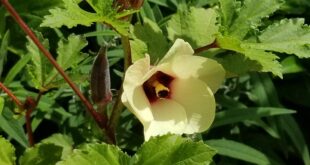Green beans, also known as string bean, snap bean in the northeastern and western United States, or ejotes in Mexico, are the unripe fruit of various cultivars of the common bean (Phaseolus vulgaris).[1][2] Green bean cultivars have been selected especially for the fleshiness, flavor, or sweetness of their pods.
Green beans are found in two major groups, bush beans and pole beans.[5]
Bush beans are short plants, growing to approximately two feet in height, without requiring supports. They generally reach maturity and produce all of their fruit in a relatively short period of time, then cease to produce. Gardeners may grow more than one crop of bush beans in a season.
Pole beans have a climbing habit and produce a twisting vine. Runner beans have a similar habit but are a different species of bean.
Details
Family: Papilionaceae (pa-pil-ee-uh-NAY-see-ee) (Info)
Genus: Phaseolus (FAZ-ee-oh-lus) (Info)
Species: vulgaris (vul-GAIR-iss) (Info)
Cultivar: Blue Lake Bush
Additional cultivar information: (aka Bush Blue Lake)
Category:
Annuals
Vegetables
Height:
18-24 in. (45-60 cm)
Spacing:
9-12 in. (22-30 cm)
Seed Type:
Open Pollinated
Growth Habit:
Bush
Sun Exposure:
Full Sun
Danger:
N/A
Days to Maturity:
41 to 50 days
Bloom Color:
White/Near White
Soil pH requirements:
6.1 to 6.5 (mildly acidic)
6.6 to 7.5 (neutral)
7.6 to 7.8 (mildly alkaline)
Propagation Methods:
From seed; direct sow after last frost
Seed Collecting:
Allow pods to dry on plant; break open to collect seeds
Properly cleaned, seed can be successfully stored
Read more: http://davesgarden.com/guides/pf/go/39352/#ixzz3KI17adOR








